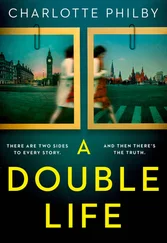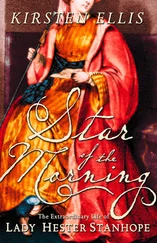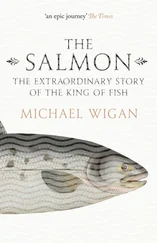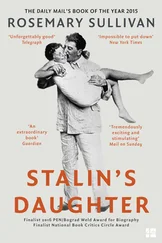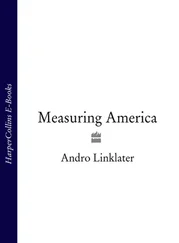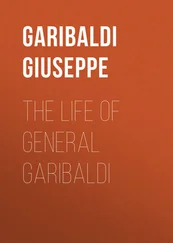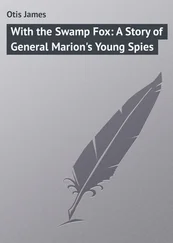No direct comment was sent to Miró, but in May 1788, Spain’s chief minister, José, Count of Floridablanca, had instructed the Spanish minister in Philadelphia, Diego de Gardoqui, of a change in official strategy. The Mississippi would remain closed, but Spain should boost the population of its North American colonies by trying “to attract to our side the inhabitants of the Ohio and Mississippi.” In response, Gardoqui became an enthusiast for inducing Americans to migrate to Louisiana and Natchez by offering them free land, access to the river, and religious toleration.
All at once Wilkinson’s privileged position was threatened by the readiness of other prominent Americans to take advantage of Gardoqui’s offer. George Rogers Clark, the hero of the capture of Vincennes from the British, asked for permission to settle in Louisiana, as did Friedrich von Steuben and Daniel Boone, while John Sevier, victor of Kings Mountain in the south and founder of the short- lived Franklin colony, assured Gardoqui that the settlers in eastern Tennessee were “unanimous in their vehement desire to form an alliance and treaty of commerce with Spain, and put themselves under her protection.” In December 1788, Wilkinson’s own partner Isaac Dunn hurried into Frankfort with news that Gardoqui had approved a proposal by Colonel George Morgan to settle one hundred thousand people on several million acres in Louisiana. His project had already reached the stage of receiving permission to create a town on the Mississippi that its owner called New Madrid.
As a result, every word of Wilkinson’s letter to Miró in February 1789—and the lies about the convention made up only a small part—was designed to demonstrate his unique usefulness and loyalty to Spain’s interests. Bundled up with his writing was a letter from his old commanding officer, General Arthur St. Clair. It had been sent to Dunn and described St. Clair’s distress at hearing that “our friend Wilkinson” was a leader of the Kentucky secessionists, whose goal “would completely ruin this country.” Unaware that Dunn was part of the conspiracy, St. Clair pleaded, “Should there be any foundation for these reports, for God’s sake, make use of your influence to detach Wilkinson from that party.” This was proof, Wilkinson confided to Miró, “that the part which I play in our great enterprise, and the dangers to which I am exposed for the service of his Catholic Majesty, are [publicly] known.”
As though this were not enough, Wilkinson also told the Spanish governor that in November 1788 he had been contacted by John Connolly, a British spy sent to investigate the loyalties of western settlers by Lord Dorchester, governor of Canada. Connolly’s cover was the pretense of trying to recover Kentucky properties confiscated during the war, but it was blown as soon as he entered the newly established Northwest Territory beyond the Ohio River. “My Information is, that he is sent to tamper with the People of Kentuckey and induce them to throw themselves into the Arms of Great Britain,” St. Clair, the territorial governor, informed John Jay in Philadelphia, “. . . [and] if that cannot be brought about, to stimulate them to Hostilities against the Spaniards, and at [any] rate to detach them from the united States.”
Connolly had visited Wilkinson expecting him to be sympathetic and promised British money, ammunition, and ships to help the Kentuckians “open the navigation of the Mississippi.” But by Wilkinson’s account, instead of welcoming an insurrection that was both anti- Spanish and anti-American, he made Connolly the victim of an audacious sting. “I employed a hunter, who feigned attempting his life,” Wilkinson boasted to Miró. “As I hold the commission of a Civil Judge, it was, of course, to be my duty to protect him against the pretended murderer, whom I caused to be arrested and held in custody. I availed myself of this circumstance to communicate to Connelly [ sic ] my fear of not being able to answer for the security of his person, and I expressed my doubts whether he could escape with his life. It alarmed him so much, that he begged me to give him an escort to conduct him out of our territory, which I readily assented to.” In return, Connolly supposedly promised to keep Wilkinson informed of British plots against Louisiana.
The story is not entirely credible, and no evidence suggests that Miró took at face value, even though Wilkinson promised that he wrote “as a good Spaniard.” But the reminder that Spain could not afford to ignore Kentucky’s disaffected settlers served Miró’s purpose. Convinced that the threat they posed to Louisiana had to be neutralized, he regarded Gardoqui’s intervention as a piecemeal solution. His preferred strategy remained that put forward in Wilkinson’s memorial. That plan was Miró’s plan, just as Wilkinson was Miró’s man, and the Louisiana governor still pressed Madrid for a favorable response.
ADDING URGENCY TO Wilkinson’s appeal was a misfortune that had blasted his first hopes of growing rich from trade. In September 1788, the Speedwell , the ship carrying the cargo of luxuries that Clark, Dunn, and Wilkinson intended to sell to Kentuckians, left New Orleans. Its voyage upriver was slow, and she had only just entered the Ohio River in November. There she was caught by ice that formed unseasonably early that winter. Before her precious cargo could be off- loaded, the hull was crushed, and she sank to the bottom with Wilkinson’s investment of more than $6,000.
To recoup the expense, he assembled another, larger fleet to take goods down the Mississippi. Short of funds, he was forced to borrow from wealthy speculators such as John Lewis of Louisville, and the boats were sent south as soon as the ice began to break in the spring of 1789. When they arrived in New Orleans, the governor of Louisiana—“the man I love and the friend I can trust”—immediately agreed to buy 235,000 pounds of Wilkinson’s tobacco, “on the grounds” as Miró informed Madrid, “that it was important to keep the General contented.”
To calm Wilkinson’s fears that he was being displaced, Miró also found time in his fourteen-hour working day to write and assure him “that I still continue to hold you as the principal actor in our favor,” and to submit for his consideration Sevier’s proposal that the settlers in Tennessee should become Spanish subjects. “I hope that, gathering all the information which you may deem necessary,” Miró continued, “you will give me your opinion on this affair, in order that I may shape my course accordingly.” He signed himself “your most affectionate friend.”
Despite this reassurance, Wilkinson felt it necessary to see Miró in person and in June 1789 followed his boats down to New Orleans. He arrived to discover that his trading ambitions had suffered a second devastating blow. His partner, Isaac Dunn, had killed himself days earlier from despair at his wife’s infidelity and his own debts. Later, Wilkinson estimated his losses from the tragedy to have amounted to ten thousand dollars. He may have exaggerated, but not by much. At the end of the 1789 season, when Joseph Ballinger, a courier from New Orleans, arrived with two barrels of silver to pay the farmers of Lincoln County for the tobacco they had entrusted to Wilkinson, there was not enough to cover what was owed them. Their anger and abuse began the erosion of Wilkinson’s popularity in Kentucky.
The financial loss made him still more dependent on Miró’s goodwill, but to his alarm the royal council in Spain showed itself hostile to his secessionist plans. Its first direct reaction to his memorial was only delivered to New Orleans early in 1789. Both the eighteen-month delay and the woolly quality of the response help to explain Spain’s inability to deal with the swiftly changing events in the Mississippi basin. Demonstrating its failure to understand the central point of Wilkinson and Miró’s strategy, that access to the river was the key to political influence in the region, the council declared that the Mississippi should be opened to American trade, subject to a mere 15 percent duty on goods sold. Although this eliminated much of the settlers’ incentive to put themselves under Spanish rule, the council also declared that migration to Louisiana was to be encouraged. Finally, in a direct rebuff to Wilkinson and Miró, a ban was placed on any help being given to Kentucky’s secessionist movement.
Читать дальше



